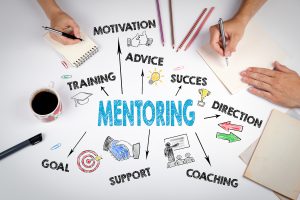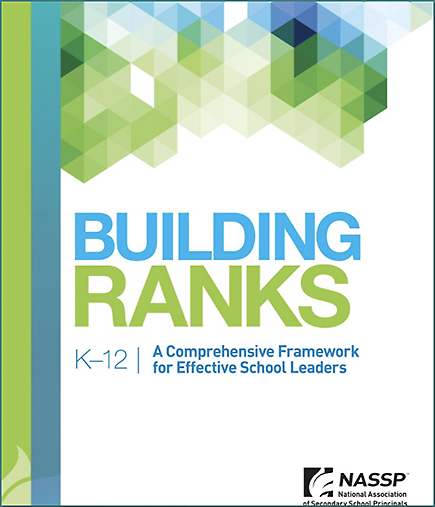Restart and Recovery
BRIEF 1: SYSTEMS CONDITIONS
Leveraging Principals in System-Level Strategies for Recovery
August 2020
About
Principals,
Communicating up is just as important as communicating out. It is critical that your voice is heard, as you are the first recipients of “community feedback”.
The National Association of Secondary School Principals (NASSP) is the leading organization of and voice for principals and other school leaders across the United States. NASSP seeks to transform education through school leadership, recognizing that the fulfillment of each student’s potential relies on great leaders in every school committed to the success of each student. Reflecting its long-standing commitment to student leadership development, NASSP administers the National Honor Society, National Junior Honor Society, National Elementary Honor Society, and National Student Council.
Contents
System-Level Strategies for Recovery

System-Level Strategies for Recovery

District leaders worked tirelessly over the summer to establish the system-level conditions to allow schools to launch and then sustain high-quality instruction and support the wellbeing of their communities as public health conditions continue to evolve over the course of the 2020-21 school year. Ensuring that principals have the capacity and ability to leverage these systems and structures in ways that meet the ongoing needs of their school community is critically important.
The abbreviated and adapted definitions from Harvard’s Public Education Leadership Project (PELP) defines systems as “the processes and procedures through which work of the district (or school) gets done” and structures as “how the work of the district (or school) gets done.”
These definitions illustrate the intentionality and flexibility of both thought and action needed in school leaders. Systems thinking helps principals think through their school’s specific processes, procedures, protocols, routines etc. that inform their daily work and interactions with all of their school community stakeholder groups.
The Professional Standards for Educational Leaders (PSEL) and NASSP’s aligned framework for school leadership, Building Ranks™, not only communicate the expectations around leveraging systems and structures for effective school leaders but also help them operationalize their practice over time.
As districts continue efforts to monitor conditions and adjust practices for the remainder of the school year, ensuring that principals are part of the difficult decisions that will need to be made and not simply stakeholders called upon to carry them out is vital to meeting the needs of every student, including those with the greatest needs and who are most challenging to serve. In a time of continuing change, principals’ insight, community relationships, and capacity to serve as adaptive leaders will be critical in meeting, monitoring, and adjusting district goals.
In the sections that follow, we connect principal expertise and capabilities to addressing system-level conditions in the six focus areas identified by CCSSO, as well as identify links to standards and resources that can help school leaders ensure that districts’ efforts around planning and implementation are sustained throughout the school year.
Overview

COVID-19 continues to present unprecedented challenges for our schools and communities, with no one-size-fits-all road-map for districts and their leaders to follow. Following this spring’s extended closure of school buildings and rapid pivot to on-line instruction, CCSSO has issued guidance for districts navigating a still-changing public health and education landscape as they move into the 2020-21 school year.
Based on input and best practices from state education agencies and national and local organizations, CCSSO’s guidance recognizes the essential elements of supporting school communities as buildings reopen, including the system-level conditions required for an effective restart, the importance of sustaining strong teaching and learning, and efforts to ensure the physical and mental well-being of students, staff, and the entire school community across any combination of remote, in person, and hybrid scenarios. Research has long affirmed the central role of building leaders in all of these areas, and principals will play a critical role in districts’ efforts to sustain continuity of learning during a period of continued change.
As the voice of school leaders, NASSP is adding to this important knowledge base for districts with three briefs that identify opportunities to ensure that principals both support—and are supported—as part of this essential and intentional work. Informed by research, national standards, and the practical experience of leaders in the field who have worked extensively with their district leadership on planning and executing reopening plans for Fall 2020, this first brief focuses on strategies to leverage principals which districts can explore to ensure that system level efforts around engagement, curriculum, staffing, and other vital focus areas fully meet the needs of each student and the broader community.

Engagement
How will the needs of students and families, especially the most vulnerable, and the voices of teachers, school leaders, and staff be incorporated into the structures and decisions school systems make for the 2020-2021 school year?
Focus Area Considerations
Ensuring that these needs are incorporated into system-level structures and decisions is most readily and fully accomplished by leveraging existing building-level relationships with families and the community organizations and resources that can help schools and districts support their most vulnerable populations. Principals are an essential component of district efforts to create improvement cycles focused on engagement access, implementation, and quality to meet the needs of every family as conditions change during the school year. Principal roles in engagement include, but are not limited to:
- Collecting and assessing information about student, staff, and family needs
- Leveraging and coordinating relationships with community partners to meet student and family needs
- Participating in ongoing outreach and communications with the school community
- Communicating district-level decisions and changes to their school community
- Selecting and leading engagement centered professional development for their staff based on the needs of their specific school populations (trauma informed communication, specific language and cultural considerations, etc.)
Supporting Standards and Resources
PSEL Standard 8 calls on principals to create and sustain positive relationships with families and the community for the benefit of students and learning. It encourages two-way communication and maintaining a presence in the community as ways of collecting meaningful data and input to guide decision making.
NASSP Building Ranks:
The Communication and Relationships dimensions of leadership both recognize the impact on student learning that results from building and sustaining relationships beyond the school building, including with families, community members, and organizations that can help meet the needs of the whole student and their families.
Tools and Resources for School Leaders:
- Getting Started with Real Family Engagement During Distance Learning (Flamboyan Foundation)
- Family Engagement Reentry Resources (Diverse Learners Cooperative)
- The Coalition for Community Schools examples and models for strong community partnerships
- Communication and engagement resources (Battelle for Kids)
- Leading Change Handbook (The Wallace Foundation)
Options for Districts to Consider
- Engage principals in developing district wide language and protocols for ongoing outreach and communications
- Include school-level input among the multiple avenues for collecting and assessing information about ongoing student and family needs, led by principals and building staff. This may be particularly helpful in ongoing efforts to engage with all families—including the hard-to-reach ones—identified in the CCSSO document
- Ensure that school leaders serve as the public voice for how feedback informs ongoing district-level decision-making within their own school communities.
- Leverage existing school-level relationships with community partners and organizations to meet student and family needs by including principals in district-wide assessments of community assets and partners.
- Allow principals to identify/develop appropriate communication and engagement training for their teachers and staff based on the needs of their specific school populations (trauma informed communication, specific language and cultural considerations, etc.)
- Leverage principals as local points of contact and decision-makers for districtwide partnerships with large organizations to ensure supports meet the needs of each individual school community.
Curriculum
How will each student consistently access high-quality instructional materials to support their learning?
As teaching and learning continues to shift between in-person and remote settings during the 2020-21 school year, ensuring consistent delivery of a common, high-quality curriculum is critical to ensure continuity of learning. While the CCSSO guidance only focuses on the planning phase of selecting curriculum and aligned professional development among system-level conditions, principals will play a critical role in supporting teachers as learning modes and scenarios continue to evolve, as will be described in more detail in a forthcoming companion piece to CCSSO’s guidance on Academics.
Principal roles in ensuring system-level continuity in the delivery of curriculum include, but are not limited to:
- Creating structures that allow teachers in distance and in-person roles to communicate with each other to ensure curriculum is coherent across all settings and modalities of instruction
- Monitoring aligned assessments and other systems to ensure quality of instruction and student learning across all modalities
- Creating structures that allow teacher teams to monitor and adjust instruction as needed within and across all settings
- Leading training and support for ongoing adaptations to curriculum
- Creating avenues of support for families so they can assist their students in remote learning.
Supporting Standards and Resources
PSEL Standard 4 specifically focuses in on the role principals play in supporting coherent systems of curriculum, instruction, and assessment—and, importantly, in aligning and focusing systems within and across grade levels and ensuring that assessment systems are used in appropriate ways to monitor progress.
NASSP Building Ranks:
The Curriculum, Instruction & Assessment dimension places a similar emphasis on ensuring alignment, along with ensuring that technology is leveraged in effective ways to support quality instruction. Supporting this central element of teaching and learning is also connected to a wide range of other leadership dimensions, including Human Capital Management, Strategic Management, and Results Orientation.

Tools and Resources for School Leaders:
- Reopening Schools: The Role of Instructional Materials (Collaborative for Student Success)
- Leading Success: Using Data to Assess and Inform School Change (NASSP)
- The W. Edwards Deming Plan-Do- Study-Act Cycles (Deming Institute)
- Leading Change Handbook (The Wallace Foundation)
Options for Districts to Consider
- Include school leaders in the selection and implementation design of new curriculum and subsequent modifications
- Provide coaching and professional support to ensure that principals have the capacity to monitor alignment and coherence in curriculum across multiple modes of instruction
- Create assessments and other systems to help school leaders monitor and ensure quality of instruction and student learning across all modalities and settings.
- Engage principals in assessing ongoing staff performance in remote and in-person settings and creating/supporting individual development plans to support their work
Technology
How will each student access learning every day, whether in-person or remote?

School leaders are instrumental in assessing technology gaps within their school communities and coordinating the distribution of technology and training for students, families, and caregivers. Given the significant equity issues involved in remote learning, they should continue to play a critical role in monitoring technology use, identifying access gaps, and providing continuing training and professional development throughout the school year.
- Principal roles in ensuring system-level continuity in technology access and usage include, but are not limited to:
- Surveying at-home technology access and advocating with district leaders to ensure that all students and their families have adequate in-home devices and Internet access to support remote learning.
- Coordinating school-based support to families to ensure they can help their students access all necessary programs and curriculum.
- Monitoring and modifying professional development and training based on areas of challenge encountered by staff
- Ensuring accommodations for students with disabilities
- Coordinating partnerships with neighborhood organizations or creating public Wi-Fi zones on school property to supplement at-home technology access
Supporting Standards and Resources:
PSEL Standard 3 emphasizes equal access to learning opportunities, academic and social support, and other resources—including technology—as an essential component of equity. PSEL Standard 9 focuses on technology use and the importance of implementing practices that protect learning from disruption.
NASSP Building Ranks:
The Equity leadership dimension focuses on ensuring that each member of the school community is provided fair, just, and individualized opportunities for learning and growth. Human Capital Management emphasizes the importance of targeted professional development for staff, while Strategic Management and Results Orientation charge school leaders with monitoring and making adjustments based on gaps in technology use and access.
Tools and Resources for School Leaders:
- Conducting Virtual IEP Meetings (Diverse Learners Cooperative)
- Online learning resources and support (ISTE)
- COVID-19 EdTech guidance (CoSN)
- Leading Change Handbook (The Wallace Foundation)
Options for Districts to Consider:
- Empower school leaders to assess and support the ongoing technology needs of students, families, and staff
- Provide support and development to help school leaders address the needs of students with disabilities in distance learning settings
- Encourage school leaders to initiate and support school-community partnerships that provide Internet access and ongoing technology support to students and families
Staffing
How will each student be supported by teachers, so they experience strong and integrated teaching whether in-person or remote?

All students must be supported by teachers, but as both students and teachers navigate the complexities of new modes of learning, school leaders will play a vital role in creating the right conditions. Principals will also require support to adequately establish and monitor the new structures and roles created to address student needs across all of the settings in which learning will take place during the 2020-21 school year. Many of these new roles—including ones focused on supporting remote learning and student care—will be school-based and require ongoing support from building leaders. School leaders also will play an essential role in on-boarding, training, supporting, and ensuring smooth transitions between in-person, remote, and hybrid settings during the school year.
Principal roles in ensuring system level continuity in staffing include, but are not limited to:
- Conducting and providing feedback in new systems for observation, support, and coaching across all learning modalities
- Providing structures and support for staff to collaborate, plan, and coordinate across a mix of in-person, on-line, and hybrid settings
- Monitoring support for staff and identifying gaps in capabilities in new areas such as remote learning and student care
- Making building-level decisions on reallocating staff to optimize each individual’s professional capacity and overall shifts in learning modalities and student needs
- Maintaining strong relationships with staff to bolster morale and retention
- Ensuring a culture of distributed leadership to empower staff in new roles and help identify future school leaders
Supporting Standards and Resources

PSEL Standard 6 emphasizes school leaders’ role in recruiting, hiring, supporting, developing, and retaining school personnel as part of a cohesive, educationally effective school community, as well as overseeing the development of their professional skills and practice and providing continuous improvement of individual and collective instructional capacity. As part of its emphasis on operations and management, Standard 9 calls on school leaders to assign teachers and staff to roles that optimize their professional capacity to address each student’s learning needs.
NASSP Building Ranks:
Along with the recruiting, retention, and support responsibilities detailed in its Human Capital Management leadership dimension, Building Ranks emphasizes the importance of holding all members of a school community accountable for learning in the Results Orientation dimension, while the Strategic Management dimension calls for strategies that maximize organizational performance based on changing needs.

Tools and Resources for School Leaders:
- Educator Roles (CCSSO Guide, Appendix A)
- Virtual Recruitment Guide and Virtual Talent Guide (TNTP)
- Avoiding Bias in Video Interviews (TNTP)
- Virtual On-boarding and Cultivation Guide (TNTP)
- Tips for Planning and Facilitating Virtual Meetings (TNTP)
- Tips for Better Check-Ins During COVID-19 (The Management Center)
- Leading Success: Developing Leadership Skills for Change (NASSP)
- Leading Change Handbook (The Wallace Foundation)
Options for Districts to Consider
- Develop clearly defined expectations for in-school support and supervision of remote learning, student care, and other new roles
- Provide professional development and resources to allow school leaders to provide individualized teacher supports in remote and hybrid settings
- Model new models of observation, feedback, and coaching for teachers and staff by providing similar supports and opportunities for coaching and collaboration for building leaders
- Provide school leaders with training and support to foster faculty leadership development within their buildings as part of broader strategies to create leadership pipelines and identify future principals and overall shifts in learning modalities and student needs
- Maintaining strong relationships with staff to bolster morale and retention
- Ensuring a culture of distributed leadership to empower staff in new roles and help identify future school leaders
Scheduling
How will each student attend school regardless of the selected model in a manageable and safe way that supports learning coherence?
The need to repeatedly change schedules may be the only unchanging element of the 2020-21 school year in many districts as local health conditions and other factors continue to shift. With schools likely to manage multiple in-person, remote, and hybrid schedules for different groups of students at any given time, school leaders hold the primary responsibility for operationalizing district schedules and plans. They also play an essential role in ensuring that each student’s well-being and learning are supported as conditions and schedules continue to evolve. Principal roles in ensuring system level continuity in scheduling include, but are not limited to:
- Developing, managing, monitoring, and adjusting increasingly complex master schedules for their schools to reflect remote and hybrid modes of instruction.
- Using feedback from families to understand and respond to individual student needs, preferences, and constraints as schedules continue to evolve.
- Ensuring that their schools’ physical facilities and transitions (beginning/end of day, lunch, and class changes) are prepared for social distancing and other modifications as schedules and modes of instruction change, with an emphasis on ensuring that the needs of the most vulnerable students are adequately met.
- Communicating needed changes to schedules and modes of instruction to students and families, stakeholders, and staff.
- Identifying and supporting community partnerships that can support student well-being and family needs, such as after-school care or virtual tutoring, in on-line or hybrid learning models.

Supporting Standards and Resources
PSEL Standard 5 charges school leaders with creating a safe and supportive school environment for each student—whether in person or virtual. Standard 9 reflects their role in creating, managing, and monitoring systems and schedules that promote the vision and mission of their school.
NASSP Building Ranks:
The Strategic Management dimension of leadership details the importance of using master schedules to not only align resources to specific instructional needs, but also to advance other strategic goals, such as instructional collaboration and equity, in ways that maximize learning for each student.
Tools and Resources for School Leaders:
- School Scheduling Models (CCSSO Guidance, Appendix A)
- Education Resource Strategies Comprehensive Strategic School Design toolkit (ERS)
- Leading Change Handbook (The Wallace Foundation)
Options for Districts to Consider

- Provide school leaders with tools and administrative support to more easily manage changes to master schedules as modes of instruction continue to shift
- Provide as much flexibility as possible for building-level changes to scheduling that meet the needs of individual students, particularly those who are most vulnerable or require the greatest supports
- Offer guidance to help school leaders comply with social distancing and other health guidelines to support in-person and hybrid modes of instruction creating a safe and supportive school environment for each student—whether in person or virtual.
Leading, Managing and Improving
How do we know what is working well and what needs to be adjusted?
School leaders play an integral role in understanding how well district initiatives are serving their students and school communities, and their feedback and participation are essential components of any district continuous improvement cycle. To ensure that every student, and particularly the most vulnerable, are adequately served during an unpredictable year, principals must monitor and address issues with access to learning and building-level challenges with implementation of new policies and curricula, and work with their staffs and other members of the school community to ensure quality across all modes of teaching and learning. Finally, no district level goals can be considered an overall success when individual schools are not meeting them, so engaging and empowering building leaders in improvement cycles is essential.
Principal roles in ensuring system-level continuity in leading, managing, and improving include, but are not limited to:
- Establishing, monitoring, and acting on building-level goals across all key areas (access, implementation, and quality)
- Communicating goals, areas of improvement, and action steps to staff, families, and other stakeholders and members of the school community
- Overseeing and supporting sub-building level improvement cycles among project leads, teacher teams, and other groups or initiatives
- Ensuring that equity is a central component of all building-level goals and decisions made based on those goals
Supporting Standards and Resources
PSEL Standard 10 affirms that principals are the primary agent of continuous improvement that promotes each student’s academic success and well-being within a learning community. It charges school leaders with engaging others in improvement cycles and processes, applying a systems perspective to all aspects of school organization, programs, and services, and using continuous improvement methods to achieve the school’s vision, mission, and core values. Additionally, Standard 9 calls on leaders to develop and manage productive relationships with the central office and district leadership to better align their efforts around system goals.

NASSP Building Ranks:
The precepts of continuous improvement are infused throughout all of Building Ranks leadership dimensions, including Strategic Management and Results Orientation. Adaptive school leaders apply improvement strategies to virtually all aspects of schools, including their own growth as principals.
Tools and Resources for School Leaders:
- Sample Goals and Data Collection (CCSSO Guidance)
- COVID-19 Support Survey (TNTP)
- School Climate Survey Compendium (USDOE)
- Leading Success: Using Data to Assess and Inform School Change (NASSP)
- Education Resource Strategies Comprehensive Strategic School Design toolkit (ERS)
- The W. Edwards Deming Plan-Do-Study-Act Cycles (Deming Institute)
- Leading Change Handbook (The Wallace Foundation)
Options for Districts to Consider
- Create a coherent district-wide set of metrics that promotes system-level objectives and strategies but provides sufficient flexibilities for school leaders to respond to their communities’ needs
- Ensure building leaders understand district wide goals and are supported in developing monitoring systems and improvement cycles
- Develop and monitor leadership objectives for principals during this school year and provide aligned supports to develop their capacity to manage remote and hybrid learning, student needs, and other emerging challenges
- Provide autonomy for building-level goals and improvement cycles aligned with district-wide goals and objectives
Conclusion
As district leaders work to ensure that the procedures, curriculum, technology, staffing and scheduling models, and other systems they have put in place for the 2020-21 school year are meeting the needs of their schools and students, the continuous improvement practices that infuse the CCSSO guidelines for system-level conditions will be critical to success as conditions continue to change.
Continuous improvement is the lens through which school leaders have been trained to address all of their responsibilities and challenges. Districts have an opportunity in their building leaders to extend efforts to assess, collect feedback, monitor, and improve system-level conditions and ensure their objectives are being implemented in ways that support the unique contexts of each school and its community. They also have an obligation to ensure principals are supported in leading, providing feedback, and delivering instruction and vital services in new ways and across multiple modalities and scenarios.
It is our hope that this document serves to help district leaders continue to consider opportunities for building leaders to support— and be supported—as they and their schools navigate a challenging and unpredictable school year. The CCSSO guidelines notably—and rightly—base what will make a district’s efforts a success on their ability to equitably serve every student, including those with the greatest needs. School leaders’ deep understanding of their students, staff, and the communities they serve provide the strongest opportunity to ensure that this vital goal is met.
Your Guide to Effective School Leadership

Building Ranks: A Comprehensive Framework for Effective School Leaders builds leadership capacity by making connections between the characteristics of effective schools and the specific leadership practices, strategies, and actions that can foster and sustain growth in schools. It contains materials and guidance that focuses leadership efforts on Building Culture and Leading Learning, the two domains of successful educational leadership.
Reflection exercises and tools to promote it are integrated throughout the guide, with invaluable case studies from real principals. Devoid of jargon and packaged in a readable format, this book offers myriad possibilities for common reads in administrative groups, book studies, and more.

For more information
Dr. Beverly J. Hutton
Deputy Executive Director
[email protected]
